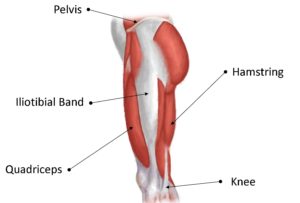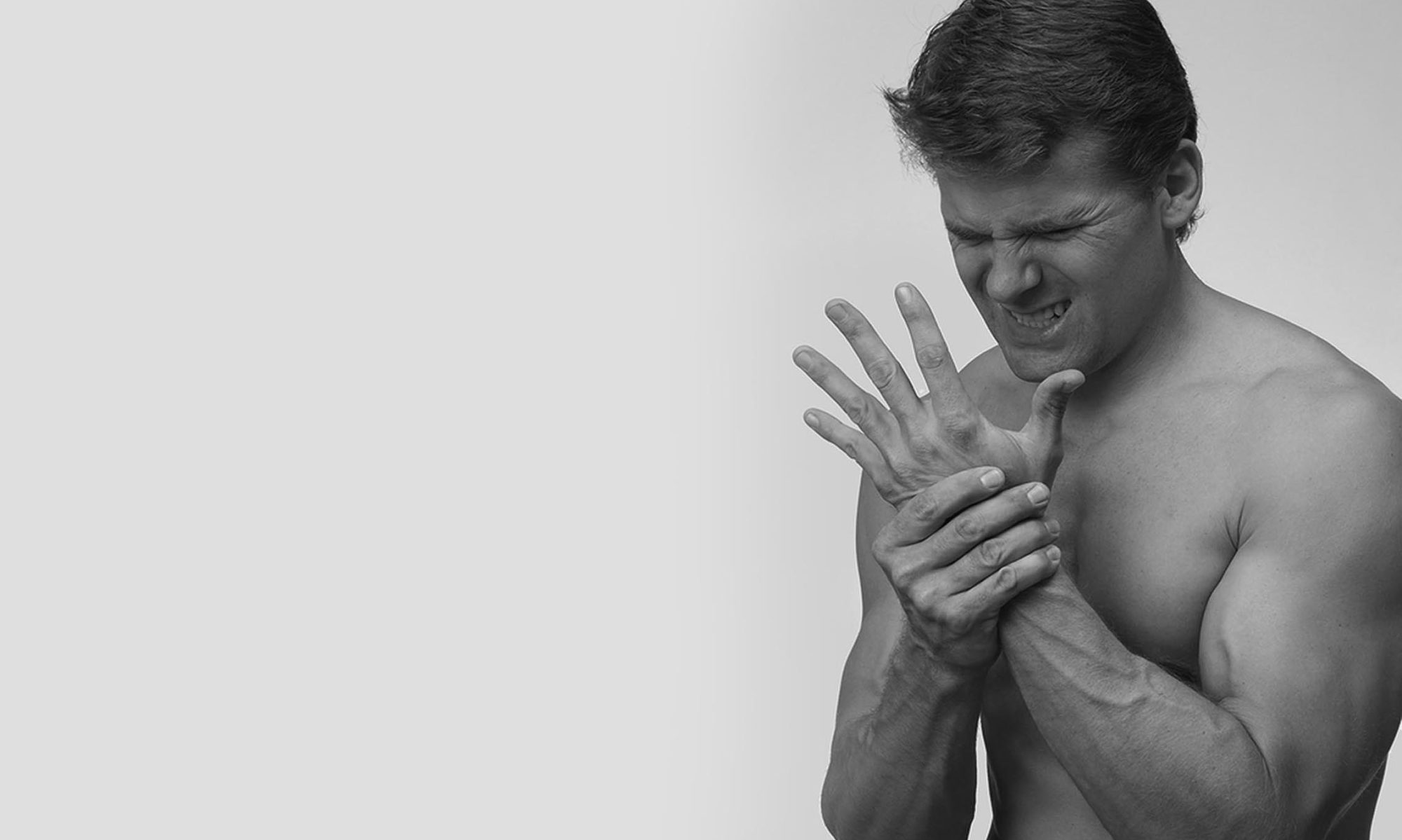I spend a lot of time talking about what tendonitis and tendonosis are, but in this post I’m going to talk about one case of what they are not. Runner’s knee is a sort of catch-all term for pain experienced in the knee, and the people who suffer from it aren’t limited to just runners. Cyclists, weightlifters, hikers… the list goes on and on. Basically, anyone who walks can get “runner’s knee”, but the knee is a complex joint and there are a lot of different ways that the pain can manifest.
Today, let’s talk about what happens when pain is experienced on the outside of the knee. This is a sub-category of runner’s knee, and the technical term for the condition is Iliotibial band syndrome (or ITBS). The iliotibial band stretches from the outside of the hip, down the thigh and past the outside of the knee, finally inserting into the top of the tibia. People can experience pain anywhere along it, but we’re going to focus on pain that occurs right next to the knee itself.

Sooo… If you have pain on the outside of your knee (not in the front, or directly below, or inside or anywhere else), chances are good that you have ITBS. Is this a case of tendonitis or tendonosis?
Although the IT band is, in fact, a tendon, ITBS is most likely not a form of tendonitis or tendonosis. Contrary to the traditional view that the IT band “rubs” across the lateral femoral epicondyle (a bony knob on the side of the knee) during walking and running and is thus irritated into a tendonitis condition, current research shows that it’s more likely the uncomfortable compression of a pocket of fat that lies beneath the IT band that accounts for the pain. (See, for example, The functional anatomy of the iliotibial band during flexion and extension of the knee: implications for understanding iliotibial band syndrome, by Fairclough et al, published in the Journal of Anatomy, March 2006, for a nice discussion of the issue.) Since most health care professionals hold the old view, unfortunately most of the advice given about how to take care of this problem is wrong. Go to massage therapist and you will most likely receive a vigorous “stretching” of the IT band (which is about as effective as trying to stretch a tire); talk to a doctor and s/he might recommend training the quadriceps muscle; a physical therapist will likely make noises about the tracking of the patella… None of it is particularly effective.
So what should you do? Probably the best home treatment available is to get yourself a good foam roller and just roll the affected area a couple of times a day on a regular basis. If you don’t know how to do this, check around the Net – there are lots of videos out there that will show you the basics. If that (along with some rest) doesn’t work, you can try icing the area, and/or contrast baths (basically alternating icing and heating the area for 10-15 minutes at a time, doing three “sets” in all). If that doesn’t work either, then you probably will need to see a doctor for MRIs and so on to determine if there’s a real problem with your knee. (Sorry.) But at least you’ll know that you’ve tried the best current science has to offer, unlike most people out there who rely on Wikipedia :rolleyes: for their information.

